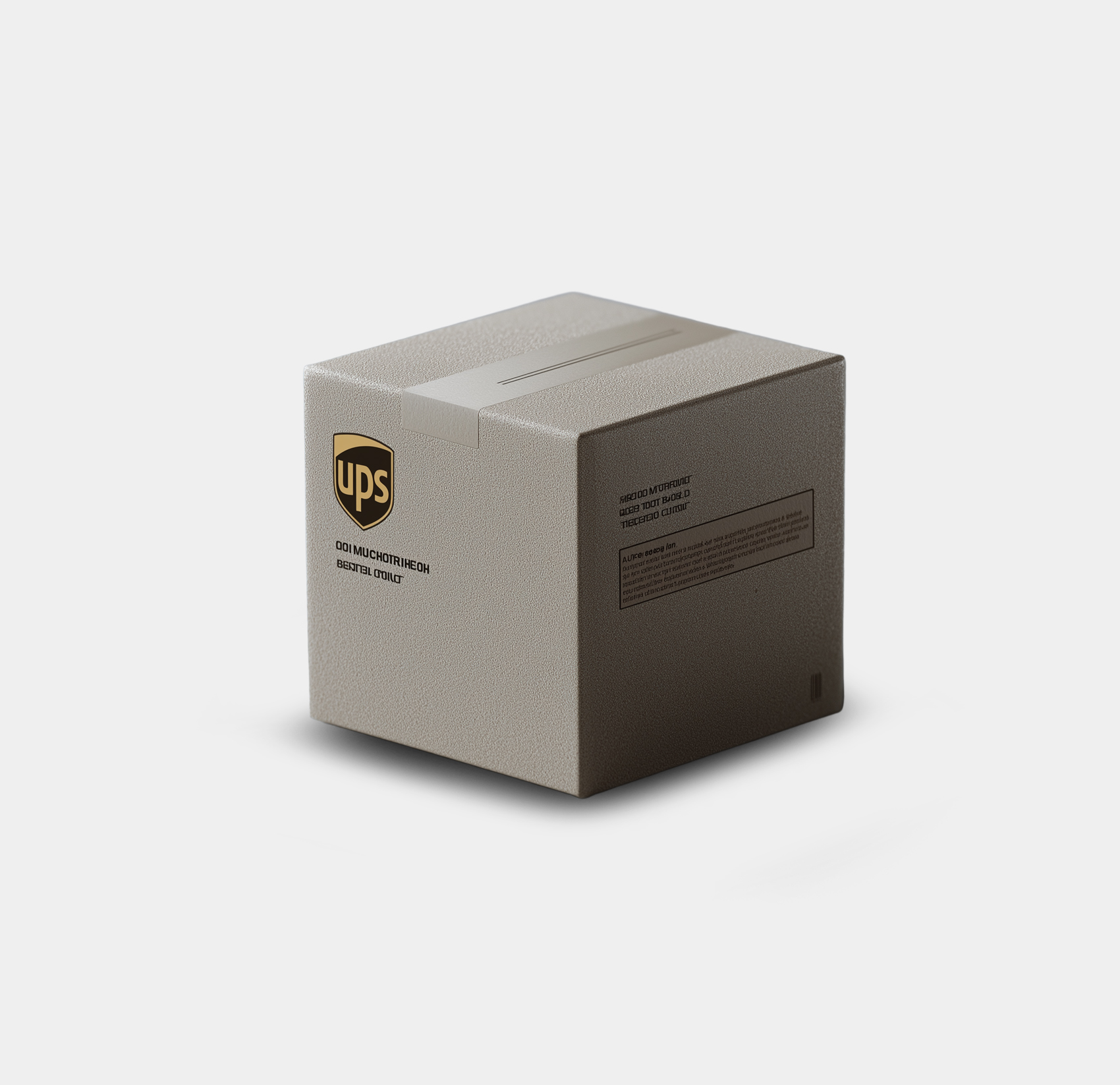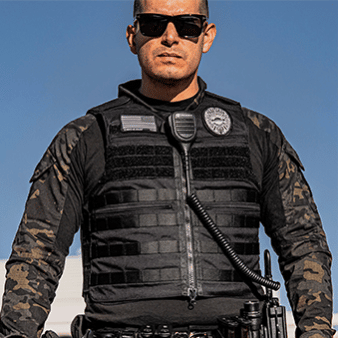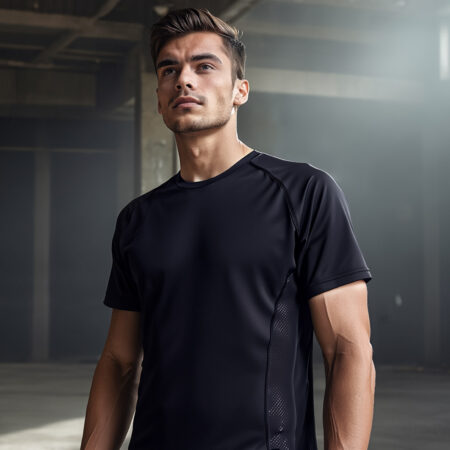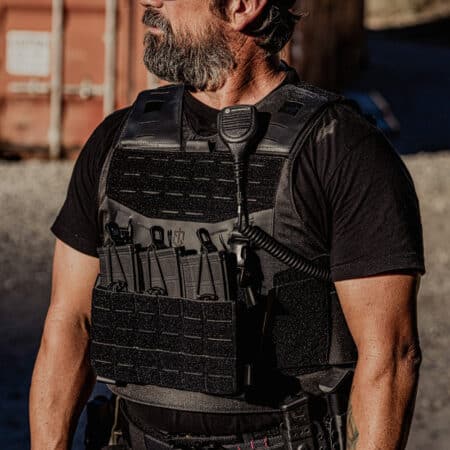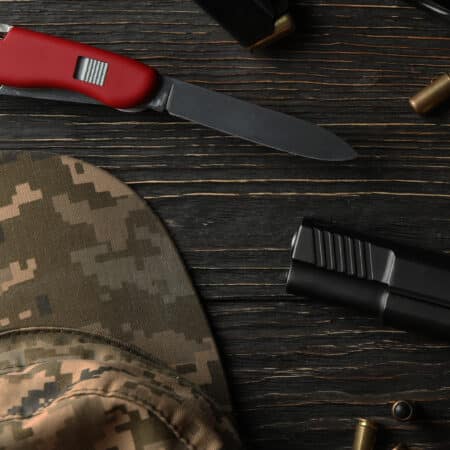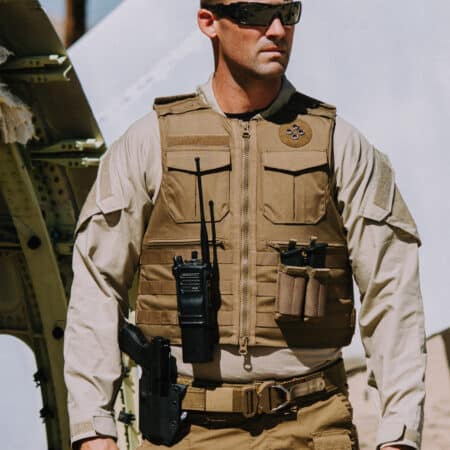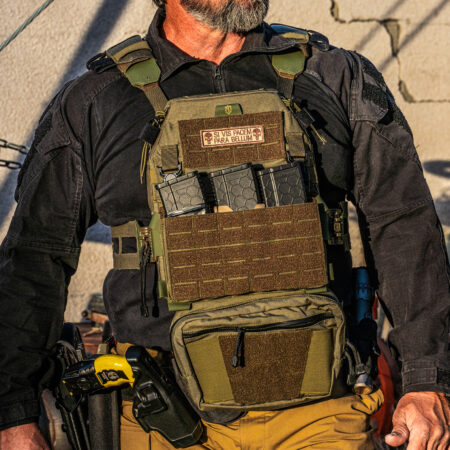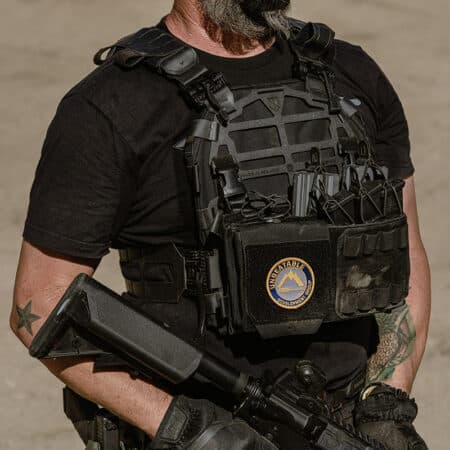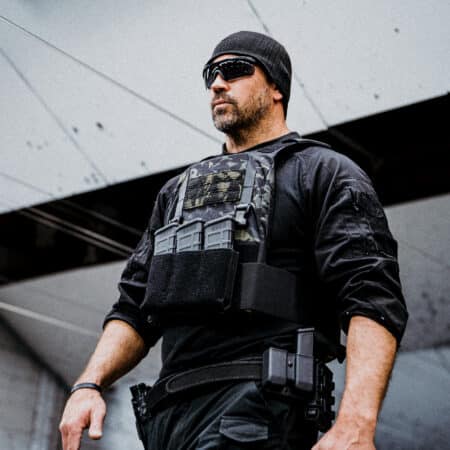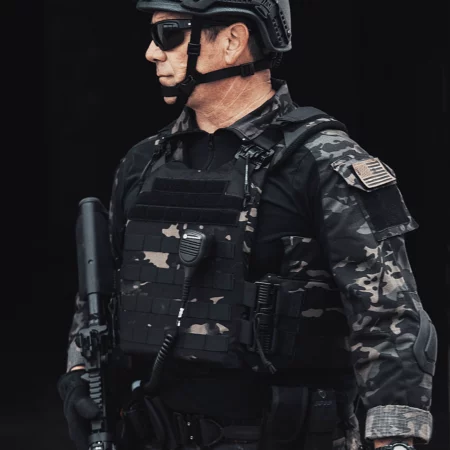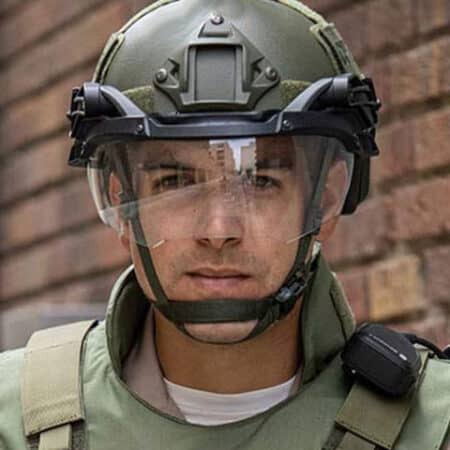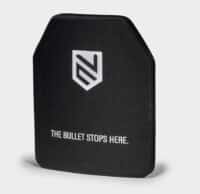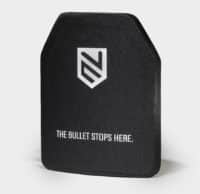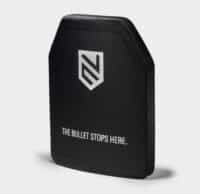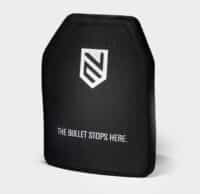
Level III+ Armor Plates
Lightweight and combat-proven rifle protection.

Level of protection
Price
Sort by
Level 3+ Armor Plate Guide

Level III+ Special Threat Armor
Body armor saves thousands of lives in dangerous situations every day, and over the last few decades, there have been a lot of innovations in the technology used to make body armor level 3. Body armor comes with different protection levels, and in the US, the NIJ (National Institute of Justice) is responsible for determining these threat protection levels.
So, the NIJ standardized body armor as level II, Level IIIA, level III, or level IV, all of which offer different levels of protection. Level II and IIIA are rated to stop pistol calibers, while Level III and level IV are designed to offer protection against rifle rounds as well. However, there is another popular threat level, that isn’t officially recognized by the NIJ standards, but is a common standard in the body armor market. This is Level III+.
Most people don’t know much about this threat protection level. Well, it offers more protection than Level III, but still less than level IV. so, in this post, we are going to tell you all you need to know about Level III+ body armor.
Stop M855
Yes, amazingly level 3+ can stop some armor-piercing rounds, but not all.
Most notably, Level 3+ armor is tested with green tip AR-15 rounds, which are also known as extreme penetrator rounds. These rounds have a heavier 62-grain projectile, and a partial steel core, which allows them to penetrate level 3 body armor. The US military themselves use the M855 green tip 5.56 NATO rounds. So, where a level 3 body armor plate stops rifle rounds, armor piercing green tip AR-15 rounds can defeat them. Level 3+ fixes that discrepancy.
Moreover, Level 3+ does not only offer multi-hit capability against green tips, but can take .308 rounds as well, and in some cases, even FMJ 30-06 rounds. Since 3+ is not an NIJ standard, always check with the manufacture to see what threats are listed.
Level III+ vs. Level IV armor plates
Both level III+ and level IV body armor plates are designed to protect your vital organs from rifle rounds, however, there are some major differences in their capabilities, and design.
Level III+ body armor is an intermediate protection level between level III and level IV. It offers more protection than a level III plate, but less than a level IV plate. A level III+ plate can stop everything a level III armor plate can, but also offers protection against steel core penetrator intermediate rifle rounds, like the M855 green tip 5.56 NATO ammunition, however, it can not stop 30 caliber armor penetration or FMJ rounds like a level IV body armor plate.
Moreover, level III+ body armor plates are usually made in a single layer of either steel or ceramics, however, level IV body armor plates are usually made from two layers, which include a steel plate, with a ceramic strike face.
Level III+ body armor is also lighter than Level IV armor, and it is more affordable and comfortable as well. Level IV body armor is used by military personnel who are likely to face large caliber threats, like 30 caliber machine guns, and high caliber snipers. However, for a civilian, Level III body armor offers excellent protection against the most popular assault rifle calibers.
Ready for Modern Threats
Are you prepared for the unpredictable nature of today’s world? As civil unrest & global conflicts become increasingly prevalent and plague our modern day, your safety and security demand the utmost attention.
That’s why Level 3+ Body Armor emerges as your ultimate defense against new and evolving ballistic threats. In a landscape marked by rapid technological advancements and evolving security challenges, Level 3+ body armor is a modern solution that combines protection, mobility, and affordability.
Defeat
- 5.56x45mm rounds at up to 3,100 feet per second.
- 5.56x45mm M855/green tip (Penetrator rounds) at 3,100 feet per second.
- 7.62×51 M80 NATO Ball (non-Armor Piercing rounds) at 3,000 feet per second.
Level III+ body armor plates are designed to take up to 6 rounds of 7.62×51 M80 NATO Ball ammunition. Moreover, though it isn’t tested for it, some level III+ ballistic plates can also stop 7.62x39mm Mild Steel Core ammunition.
Lightest and Strongest
These days, body armor can be made from multiple materials, however, when it comes to hard armor plates, the most common materials are steel, ceramics, and UHMWPE. Level III armor can be made from all three materials, however, level III+ most commonly comes in the form of a steel plate or ceramic plate.
Steel plates have an inherent problem of spalling, which is when the bullet or its pieces can ricochets off the plate and hit the person wearing body armor, or the people around them. To solve this problem, steel plates have a rubberized strike face, which can stop slapping for a couple of rounds, however, after a couple of hits, it can be removed. Moreover, level III+ body armor plates are designed to stop green tip rounds, which have a partial steel core. Steel core ammunition does not break like normal bullets on impact and can be much more dangerous if it is deflected off a steel plate.
However, level III+ body armor plates are also made from Ceramics, which are much safer, and can take multiple hits.
Level III+ balances the highest protection possible at the lowest weight possible. Staying lighter enables the operator to move as swiftly and efficiently as they can. Quick maneuverability is crucial for engaging and disengaging from combatants, adapting to changing situations, and taking cover in unpredictable environments.
Know about Level 3+ Armor Plates
WHY ARMOR PLATES?
Do you want to feel safe while on duty? You’re not alone. In today’s world, crime rates are skyrocketing and the likelihood of an emergency happening is increasing too. Thankfully there are body armor inserts that provide a level of protection for almost anyone who needs it!
Whether you work in law enforcement, military service or just preparing yourself with high-quality plates to be extra cautious during your time outside; having durable plate carriers or bulletproof vests makes all the difference when guarding against any type of attack from weaponry such as guns and knives which can often come at unpredictable times.
Can plate armor stop a bullet?
A properly designed and manufactured armor plate can stop a bullet. In fact, modern armor resists bullets better than at any time in the distant past, due to improved design methods. Modern ceramic armor plates are capable of stopping multiple rifle threats: from 7.62×51 M80 to even rounds as powerful as .30-06 APM2.
When looking for body armor, it’s important to understand that there are many different levels of protection. All armor is designed around the concept of defeating a certain level and type(s) of threat. Armor can protect against rifle rounds, pistol rounds or shotgun shells, but no one armor protects against every single threat. For instance, the standard 5.56x45mm Level III+ Multicurve ceramic plate protects well against most .223 (5.56x45mm) threats up to M855 ball ammunition; however it does not resist the more powerful M995 APM2 projectile, nor does it stop any fragmenting 9 mm or lower ammunition round as well.
Be sure to know what your armor can protect you from by verifying its specifications.
Is it illegal to wear body armor in public?
It’s true that while wearing body armor may not be popular in every state, it is legal for citizens to own and wear them throughout the continental United States. Body armor can be worn in public anywhere the local or State laws- or law enforcement- does not prohibit it from being owned or worn. As a general rule, it is best to check with your local law enforcement or State Laws on owning and wearing soft body armor or body armor plates.
If you are a member of the armed forces, sworn law enforcement (including patrol that respond to tactical situations), or government agents, you are still subject to your branch or agency’s policies and requirements when purchasing, owning, wearing, and transporting body armor while active, reserve, on or off-duty. You can read more about that in our blog post here.
NIJ Levels of Protection
The National Institute of Justice provides guidelines, specifications, and documentation on specific threat levels that both soft body armor and ballistic plates are tested and certified under. The most common levels of edged weapon and ballistic classifications are:
Level IIIA – Handgun protection up to .44 Magnum and 12 Guage 1/2 oz. Slug threats
Level III – Hard armor plates protection up to .308 M80 Ball threats.
Level IV – Ceramic Hard Armor protection up to .30-06 APM2 armor piercing threats.
The National Institute of Justice (NIJ) conducts tests and evaluations in their facilities for any given company or manufacturers of body armor, plates, soft body armor panels who submit their body armor or bulletproof materials to the NIJ Laboratory- they are subject not only to round after round of gunfire from controlled projectile guns with recorded velocity and measured points of impact and backface deformation but also are subject to rigorous conditioning process involved with such extensive testing, evaluation, and certification by the NIJ. More information on ballistic protection levels can be found here.
How much do steel or lightweight armor plates weigh?
Body armor plates- designed for inserting into plate carriers or the front and back plate pockets of a body armor tactical vest, can weigh up to 10 lbs. each depending on what they are made of. Steel plates are amongst the heaviest body armor plates one can wear- and steel plates almost always come in pairs to wear inside a carrier, making the steel plates system weight twice as much when worn as a set. Alternatives to wearing heavy and bulky steel plates come in the form of more common Polyethylene or ceramic plates. These plates are considerably lower in weight inside a plate carrier and can weigh as light as 3.5 lbs. for Level 3 Stand Alone (used without a soft-armor backing), to 6.0 lbs. in weight for Level IV Stand Alone Ceramic Armor Piercing protection. Handgun-rated Level IIIA Hard Plates can be even thinner and lighter at 1 and 1/2 lbs. per 1/4″ thin plate; resulting in less fatigue and mobility, and its inherent anti-stab qualities due to its Level IIIA hard armor plate configuration.
Can civilians own body armor?
The short answer is yes, civilians can own and possess body armor as long as it is not prohibited in their State of residence or by Law Enforcement, or Judicial decision.
Bulletproof vests and other types of body armor are essential for protection when in dangerous situations. If you want to buy one, be sure that your local regulatory authorities will allow it as they may have strict laws about what type can be worn or purchased depending on the location.
Some states have restrictions on what is considered body armor, so it’s important to be aware of the law in your area before ordering a carrier vest online or over the phone.
Will AK-47 penetrate body armor plates?
A Kalashnikov AK-47 typically will fire the 7.62 round bullet from its 16-inch barrel, but the 7.62mm bullet is also available in different casings, lengths, and projectile diameters- some holding more gunpowder to propel it with different velocities.
Lower rating plates like Hard Armor Plate Level IIIA won’t stop any rifle rounds. Some NIJ Level III Stand Alone Body Armor Plates are the lowest hard plate rating that can stop 7.62×39 type AK rounds, however we recommend wearing Level III+ Special Threat Armor plates to stop the higher velocity 7.62×51, but not the higher case pressure properties of the 7.62x54R. Those would take a Level IV Plate for what the 54R round yields in velocity and energy.
Where to buy armor plates?
For those not familiar with the industry already: the body armor market has taken the online retail medium by storm. There are countless body armor dealerships, manufacturers, and distributors online- across the nation and back. Purchasing either soft armor panels, ballistic plates in several profiles including in shooters cut or swimmers cut has never been so quick nor easy.
With the advent of social media people have been able to educate themselves on which body armor package they feel works best for their need to protect themselves self. Such profound levels of information that is available to educate the masses have encouraged shoppers to buy online for the convenience of simply choosing the armor panel or plate, purchase online, then having their most premier body armor delivered with personal service- all from the low-risk comforts of the home or office.
Online websites such as acelinkarmor.com offer a wide variety of top-of-the-line body armor, level III plates and plate carriers for inserting and wearing your armor plates inside of, as well as tactical accessories and equipment.
What is swimmers cut vs. SAPI cut?
“Swimmers cut” and “SAPI cut” are terms used to describe different shapes of body armor plates, particularly the shape of the plate’s top corners.
Swimmers Cut: A swimmers cut plate is characterized by its rounded, contoured, or reduced upper corners. The rounded corners reduce interference and friction against the arms and shoulders, making it easier for the wearer to move in a natural swimming motion. The extra movement and flexibility can be beneficial in many different situations that require a wide range of arm movement. Swimmers cut plates are often preferred by individuals who need to maintain a high level of mobility, such as operators in maritime environments.
SAPI Cut: SAPI cut is the profile of the SAPI/ESAPI(Small Arms Protective Insert) armor used by the US military. This is the most common cut and profile that is used today. This design is more focused on providing maximum coverage of the chest and torso area while still providing movement where possible. It features angled or “cut” upper corners that can accommodate the stock of a rifle or shotgun comfortably.
Both swimmers cut and SAPI cut plates are designed with specific use cases in mind, and the choice between the two depends on the wearer’s intended activities and needs. When selecting body armor plates, it’s important to consider your specific operational needs and preferences to ensure you choose the right design for your intended use.
What is NIJ certified?
NIJ certified refers to products that meet and pass the Compliance Testing Program (CTP) set by the National Institute of Justice (NIJ). The NIJ, under the U.S. Department of Justice, is responsible for establishing and maintaining standards for various aspects of law enforcement equipment, like body armor.
When a product is NIJ certified, it means that it has undergone extensive lab testing and evaluation to meet the specific performance and safety standards set by the NIJ. All NIJ certified products are on the Compliant Products List (CPL). The NIJ has established different levels, such as Level IIIA, Level III, and Level IV, each indicating levels of protection against different ballistic threats. Products are not certified if they are not on the Compliant Products List.
The NIJ compliance standards help ensure that law enforcement and security personnel are provided with reliable and effective equipment that meets consistent safety and performance criteria.
What is NIJ tested?
When a product is described as “NIJ tested” or “rated” it means that the product has not gone through the NIJ Compliance Testing Program and is not listed as compliant or certified. NIJ tested means independently tested by a 3rd party lab to meet or exceed NIJ standards. You will not find these products on the NIJ CPL.
Both NIJ-certified and NIJ-tested products are designed to meet the established standards of the National Institute of Justice, the key difference lies in the level of scrutiny and verification involved. NIJ-tested products are designed to meet the standards, while NIJ-certified products have undergone official NIJ testing and evaluation to confirm their adherence to those standards.
Is ceramic body armor fragile?
Ceramic body armor is not inherently fragile but is more brittle compared to other materials commonly used in body armor construction. The hardness and brittleness of ceramic helps it stop rifle calibers and even armor piercing (AP) rounds in certain configurations. Ceramic materials, like alumina or boron carbide, are favored for body armor because of their hardness and how effective they are at dispersing energy from a bullet impact, thereby reducing the risk of injury to the wearer. Ceramic strike faces are used in conjunction with other materials behind it, such as aramid fibers or UHMWPE, to create what is known as “composite armor.” Proper design, testing, and construction techniques help ensure modern ceramic body armor survives drops and is durable enough to withstand any situation.
 go back
go back
YOUR SHOPPING CART
your cart is empty
